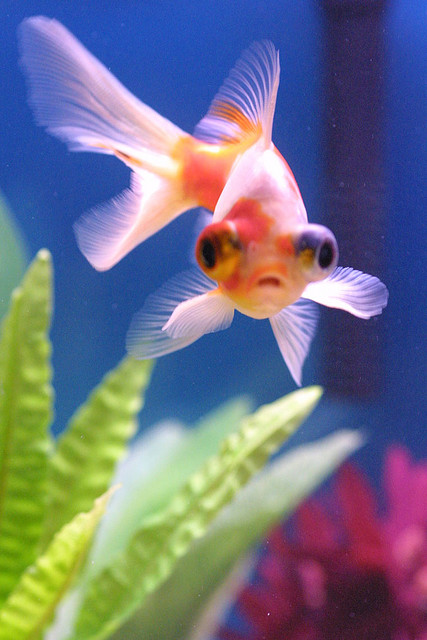
Telescope Goldfish are goldfish with big eyes. However, they are known to surpass this to reach up to 20 years in a properly maintained habitat. Telescope Goldfish have an average lifespan of 10-15 years. Most of the species are captive-bred around the world, thanks to their simplified breeding process. Scientifically, Telescope Goldfish are called the Carassius auratus and can be kept in home aquariums as a single fish or in small groups.Įven though they are not ranked among the most endangered species, Goggle Eyed Goldfish have no wild populations these days. But today, they’ve become a mainstay in the aquarium community, quickly rising in popularity to become one of the most sought-after Goldfish varieties.

Specifically, Telescope Goldfish, also known as Dragon Eye Goldfish, Globe Eye Goldfish, or Demekins, were first developed in China in the 1700s. Like their ancestors, Telescope Goldfish might have originated from the slow-moving Asian ponds, rivers, and lakes. This will equalize the temperature of both the tank and the bag water.For a long time, it’s been clear that the Goldfish varieties are descendants of a specific wild carp community called the Prussian Carp.
#TELESCOPE GOLDFISH COLORS HOW TO#
READ MORE: Angelfish How to Set Up a Fish Tank for Your Fancy Goldfishīefore placing your favorite pet inside the fish tank, you have to be aware of some important points that are essential for a healthy and happy life of these Fancy Goldfish. These fish are bottom dwellers and always scan the tank bottom, hence it should be decorated with gravel, wood, hiding place like a castle, caves or hollowed rocks and many green plants. A filter is a vital requirement in a Goldfish aquarium, as the water of a Fancy Goldfish tank turns foul and dirty within a day. Hence the minimum size of the tank should be 30 gallons for a single fish and an extra 10 gallons for each additional Fancy Goldfish. A matured goldfish attains at least 8 to 12 inches of body length. Goldfish should not be kept in a bowl, as it does not provide enough oxygen required by this fish.

The water change should be done at least once in two weeks, but only 25% of the water should be changed at a time, or the fish may feel disturbed. Regularly check these levels with the help of an aquarium kit or your fish may die. The pH level of the water should be at least 7.2 to 8, and the temperature should be around 66 to 71 degree F. The levels like the ammonia, nitrate, nitrite, temperature and salinity should be taken into consideration, because a slight difference can disturb these small creatures. The most important aspect in maintaining a healthy life of a fish is the water condition. It should have a temperature around 76 to 78 degree F. A separate small aquarium with a bare bottom and an air pump should be arranged for these eggs to hatch. Remove the eggs immediately, or they will be consumed by the predators. The fertilization of the eggs takes place externally. The eggs are usually laid on the stem plants, and at home, you can get them to lay eggs on a spawning mop.

The female lays more than 1000 eggs, out of which, only a few eggs fertilize. The male tries to nudge the belly part of the female nudging her to release the eggs, and at the same time the male releases his milt. The male fish becomes aggressive and starts to pursue the female for laying eggs. The spawning period is only once in a month between April and August, when it is a warmer climate. These fish are sexually mature from 1 to 2 years of age. In the natural habitat, they have the advantages of more oxygen, more plants to lay eggs on and more space to spawn. Reproduction of a Fancy Goldfish is a bit challenging, especially when in captivity. At the time of hatching, these fish have normal eyes, but after a month it starts to bulge and protrude. As the name suggests, the unique feature is its eyes that resemble the eyes of a dragon. This Goldfish is also termed as Celestial Eye Goldfish and Dragon Eye Goldfish.


 0 kommentar(er)
0 kommentar(er)
